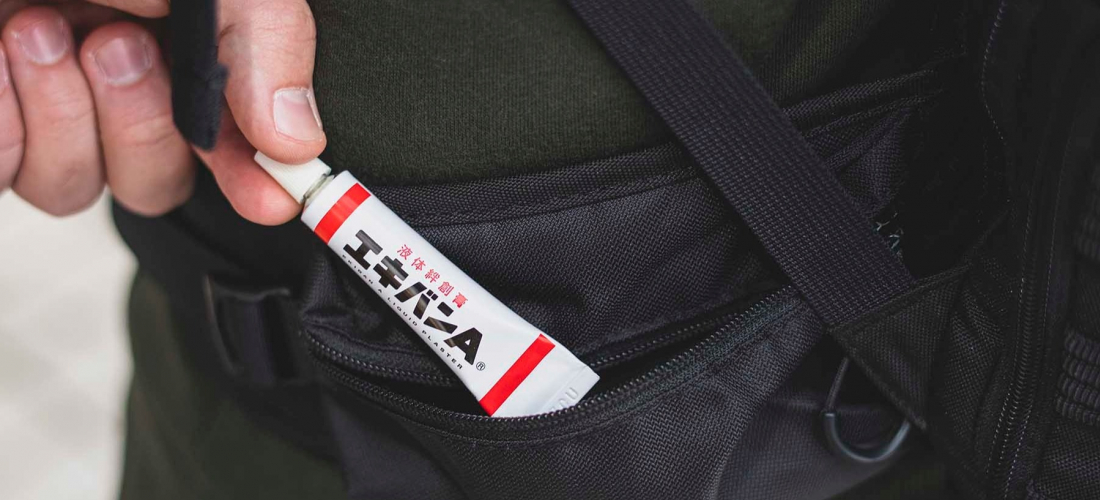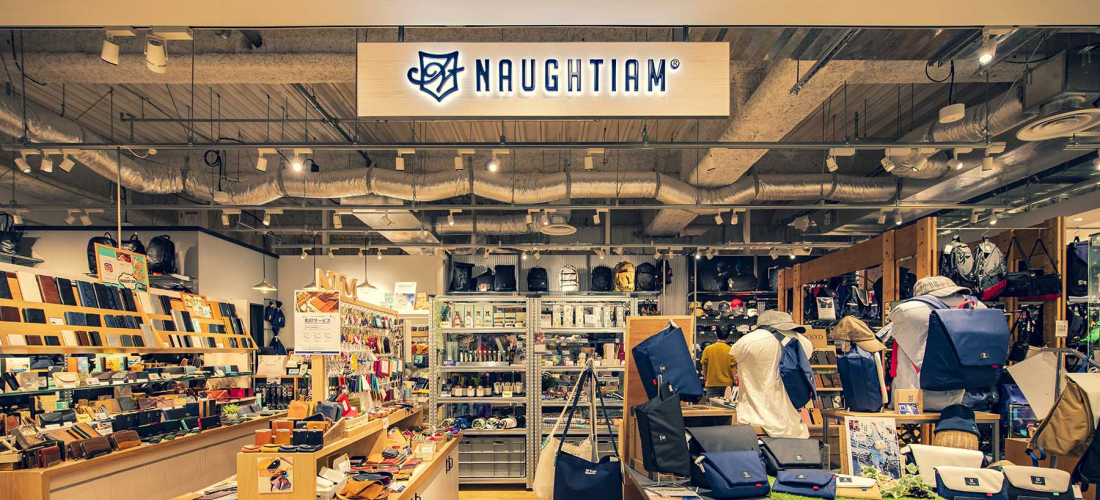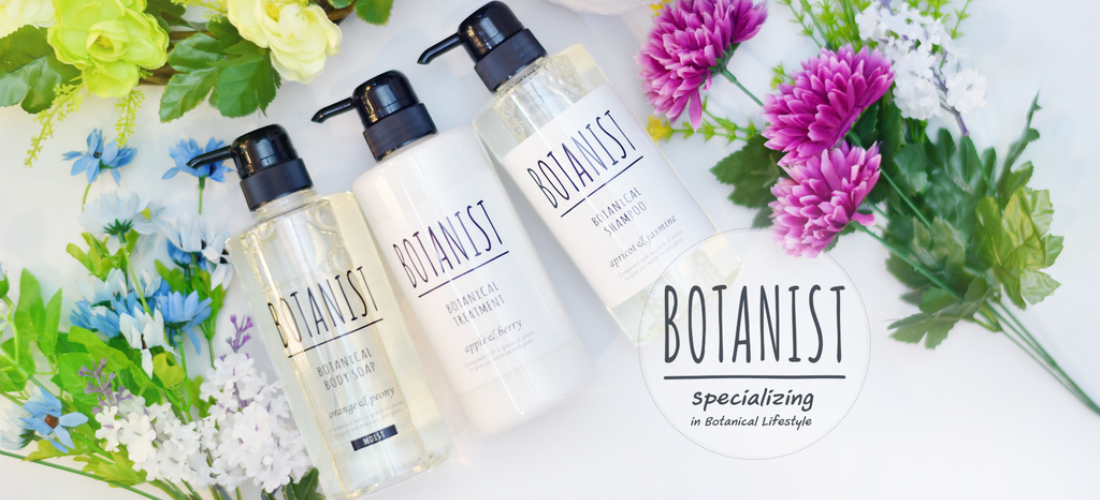
CONTENTS
L’air sec des hivers japonais rend vos mains particulièrement vulnérables aux petites coupures, éraflures et écorchures, qui vous empêcheront parfois de profiter au maximum de votre voyage. Mais quand l’inévitable se produit, que faites-vous? Personne ne veut emporter une trousse de premiers soins géante tous les jours! Il s’avère que, comme pour la plupart des inconvénients de la vie, le Japon a la réponse! Ekiban A Liquid Plaster pourrait bien être le premier secours dont vous avez besoin, en gardant les blessures propres et sèches tout au long de la journée afin que vous puissiez vous concentrer sur votre exploration du Japon. Aussi, les amis ou votre famille pourrait très bien apprécier un cadeau-souvenir aussi original qu’utile!
Une fine couche de tranquilité
Nous nous rappelons tous de comment nos parents ou frères et soeurs nous ont appris à prendre soin de nos coupures et de nos ecchymoses quand nous étions petits; on nous disait de ne pas toucher, de garder la blessure propre et sèche et de la protéger des germes extérieurs. Avec ces conseils à l'esprit, nous avons tous fait de notre mieux pour prendre soin des petites blessures du quotidien, en utilisant de gros bandages épais et en les remplaçant tout au long de la journée. Mais, vous le savez bien, ces pansements ne sont tout simplement pas pratiques! Abimez-les ne serait-ce qu'un peu d'eau ou de poussière et il est temps pour un nouveau! Ce n'est tout simplement pas idéal pour une guérison rapide.
Mais si vous avez gardé un œil sur les pharmacies ces dernières années, vous avez peut-être remarqué une innovation très pratique en particulier: les bandages liquides! Appliquez simplement une fine couche de gel transparent d'Ekiban A sur votre blessure nettoyée au préalable, laissez-la sécher et tada! Vous disposez d'une couche de protection flexible qui empêche l'eau et la poussière de pénétrer dans votre blessure et est à peine perceptible. Ici à JAPANKURU, nous étions déjà des croyants, mais nous voulions vérifier: Ekiban A pouvait-il vraiment faire un si bon travail en protégeant les coupures pendant que la peau se remodèle? Mérite-t-il une place sur la liste de courses de chaque touriste au Japon? Il est temps pour une petite enquête!
Un pansement liquide discret et efficace: Ekiban A
Les bandages qui se détachent et attirent l'attention sur une petite coupure ou une égratignure peuvent être désagréables, mais le plus gros problème est quand ils ne font pas leur travail! Tout ce que nous demandons vraiment à un bandage, c'est de garder nos blessures propres et sèches tout au long de la journée, sans nous gêner dans nos activités quotidiennes. Nous avons donc décidé de voir à quel point Ekiban A résiste à ce que la vie nous réserve. À quel point ce bandage liquide transparent et flexible fait-il bien son travail!?
Ekiban A (エキバンA)
(Ekiban A Liquid Plaster)
Disponible dans toutes les pharmacies au Japon.
① Un pansement confortable
Les bandages traditionnels peuvent être de différentes tailles, mais vous le savez, les pansements ont du mal à s'adapter aux formes étranges de notre corps. Nos doigts ne sont tout simplement pas des cylindres parfaits, donc le bandage moyen ne fait pas un excellent travail pour rester en place et protéger la peau. Ekiban A, par contre, est sensé se conformer à presque toutes les formes. Voyons cela en action.
Non seulement ce bandage semble sur le point de tomber, mais il est impossible d'utiliser correctement l'écran tactile du téléphone. Comment allons-nous naviguer sur Internet et parcourir les articles de JAPANKURU de cette façon ??
Là c'est mieux! La peau est belle et protégée, mais le doigt peut toujours bouger librement.
En plus, même si vous avez une coupure sur le bout ou le coussinet de votre doigt, si vous mettez Ekiban A sur la plaie et la laissez sécher, vous pouvez utiliser des écrans tactiles comme d'habitude! Allez-y et surfez sur le Web en toute tranquillité.
② Ne vous mettez aucune limite, et ne laissez pas votre bandage vous limiter non plus!
Fatigué de faire face à la sensation raide et serrée des bandages sur une éraflure, nous avons mis un peu d'Ekiban A pour voir à quel point nos mouvements seraient limités. La réponse est simple: rien à dire! Nous avons constaté que tant que l'articulation bouge un peu pendant que le pansement liquide sèche, le pansement liquide maintient un confort absolu tout au long de la journée!
③ Compact et pratique
Certains des plus soucieux de l'équipe JAPANKURU transportent des bandages et des trousses de premiers soins chaque jour, ce qui (sans surprise) prend beaucoup de place! Nous avons donc jeté un coup d'œil aux petits tubes d'Ekiban A et savions déjà qu'aucune expérience n'était nécessaire. Ekiban A est tout petit tout en offrant la même tranquillité d'esprit qu'un pansement normal- nous savions que nous étions prêts pour les petites coupures du quotidient! (De plus, vous n'aurez pas à vous encombrer des morceaux de papier qui apparaissent après avoir déballer un pansement. Toujours sympa au Japon, où il y a peu de poubelles publiques!)
Comment se servir d’Ekiban A en plus?
Protège les peaux irritées
Inspirés par notre succès jusqu'à présent, nous avons commencé à chercher d'autres moyens de profiter de ce qu'Ekiban A a à offrir ..
Tout visiteur au Japon vous dira que visiter le pays comprend beaucoup de marche, et lorsque vos chaussures ne sont pas de merveilleuse qualité, cela peut entraîner des frottements inconfortables et des irritations. Et une fois que vos pieds commencent à vous faire mal, cela peut rendre votre voyage encore moins amusant. Mais nous avons trouvé un excellent moyen d'éliminer le problème dans l'œuf! Mettez un peu d'Ekiban A sur les zones à risque pour réduire la friction et créer une couche de protection, et vous serez de nouveau sur pied en un rien de temps.
Une couche relativement épaisse devrait faire du bon travail, mais soyez prudent – une goutte grosse comme celle-ci pourrait causer encore plus de problèmes!
Gardez votre peau au sec!
Nous savions déjà qu'un peu de pluie ou de sueur n'allait pas ruiner une bonne couche d'Ekiban A, mais qu'en est-il du lavage des mains, de la douche ou (l'horreur) de la vaisselle?
Eh bien, figurez-bous que…
Ce n'est pas un problème! Ce produit est complètement imperméable, même en ajoutant du savon! Bien sûr, si vous tremper le bandage liquide pendant un certain temps tout en le frottant énergiquement il finira par tomber, mais il tiendra bon pour les activités quotidiennes.
Promenez-vous léger, mais en sécurité
Vous vous rappelez quand nous vous avions dit à quel point ce pansement liquide était pratique? Combien de fois avez-vous emporté quelques bandages dans un sac, seulement pour les trouver partis ou sales quand vous en avez besoin?
Un seul petit tube d'Ekiban A remplace n'importe quel pansement classique, et peut survivre beaucoup plus longtemps dans le fouillis d'objets au fond de votre sac, et il ne s'envolera pas ou ne disparaîtra pas comme par magie.
Donc, si vous voulez des pansements de premier soin à sortir quand vous en avez besoin, notre expérience veut que Ekiban A soit le choix le plus judicieux (et le plus juteux, parce que c'est un liquide!). Gardez ces petites coupures à l'abri des voyages! Achetez-en un tube pour vous et vous pourriez même être tenté de retourner dans la pharmacie pour en ramener à des amis.
Vous avez essayé Ekiban A? Cela vous a-t-il sauver votre voyage… ou rendu votre vie quotidienne plus facile? Laissez-nous votre avis sur twitter, instagram, et facebook!
Details
NAME:Ekiban A Liquid Plaster
















 >> Find out more at Japankuru.com! (link in bio)
#
>> Find out more at Japankuru.com! (link in bio)
#





 The Robot Restaurant is gone, but the Samurai Restaurant is here to take its place. Check it out, and don't forget your coupon!
The Robot Restaurant is gone, but the Samurai Restaurant is here to take its place. Check it out, and don't forget your coupon!
 신주쿠의 명소 로봇 레스토랑이 사무라이 레스토랑으로 부활! 절찬 쿠폰 발급중
신주쿠의 명소 로봇 레스토랑이 사무라이 레스토랑으로 부활! 절찬 쿠폰 발급중
 18歲以上才能入場的歌舞秀,和你想的不一樣!拿好優惠券去看看~
#tokyo #shinjuku #samurairestaurant #robotrestaurant #tokyotrip #도쿄여행 #신주쿠 #사무라이레스토랑 #이색체험 #할인이벤트 #歌舞伎町 #東京景點 #武士餐廳 #日本表演 #日本文化體驗 #japankuru #japantrip #japantravel #japanlovers #japan_of_insta
18歲以上才能入場的歌舞秀,和你想的不一樣!拿好優惠券去看看~
#tokyo #shinjuku #samurairestaurant #robotrestaurant #tokyotrip #도쿄여행 #신주쿠 #사무라이레스토랑 #이색체험 #할인이벤트 #歌舞伎町 #東京景點 #武士餐廳 #日本表演 #日本文化體驗 #japankuru #japantrip #japantravel #japanlovers #japan_of_insta
 코지마 x 빅 카메라 쿠폰으로 일본 가전 제품 쇼핑하기
#pr #japankuru #japanshopping #kojima #biccamera #japaneseskincare #yaman #dji #osmopocket3 #skincaredevice #日本購物 #美容儀 #相機 #雅萌 #日本家電 #일본여행 #면세 #여행꿀팁 #일본쇼핑리스트 #쿠폰 #일본쇼핑 #일본브랜드 #할인 #코지마 #빅카메라 #japankurucoupon
코지마 x 빅 카메라 쿠폰으로 일본 가전 제품 쇼핑하기
#pr #japankuru #japanshopping #kojima #biccamera #japaneseskincare #yaman #dji #osmopocket3 #skincaredevice #日本購物 #美容儀 #相機 #雅萌 #日本家電 #일본여행 #면세 #여행꿀팁 #일본쇼핑리스트 #쿠폰 #일본쇼핑 #일본브랜드 #할인 #코지마 #빅카메라 #japankurucoupon











































